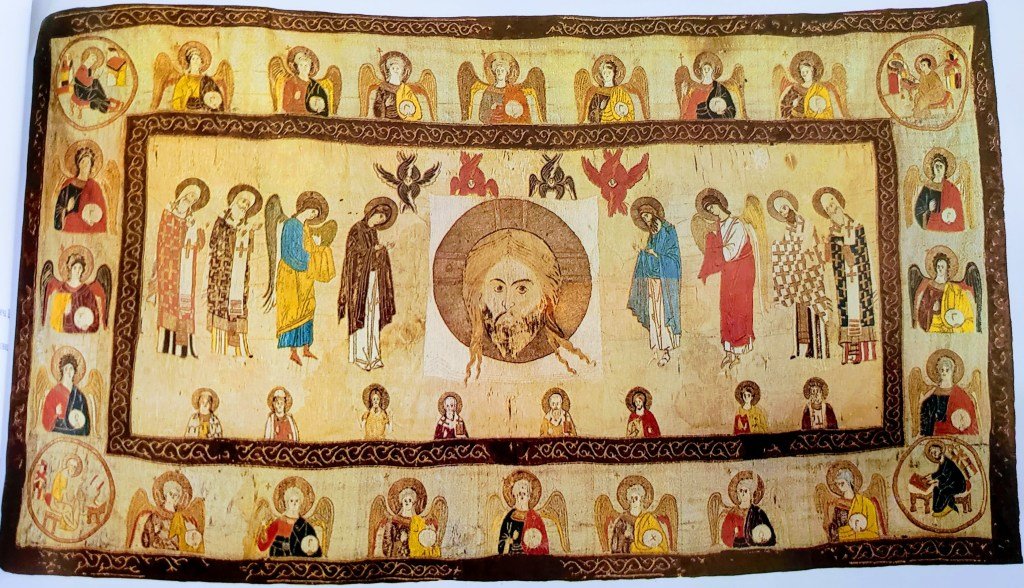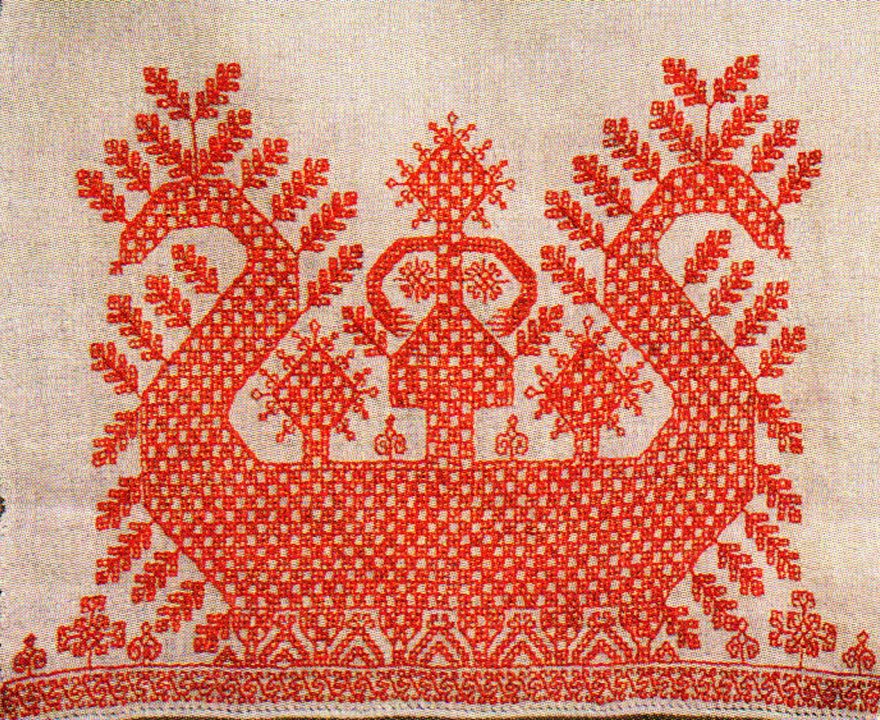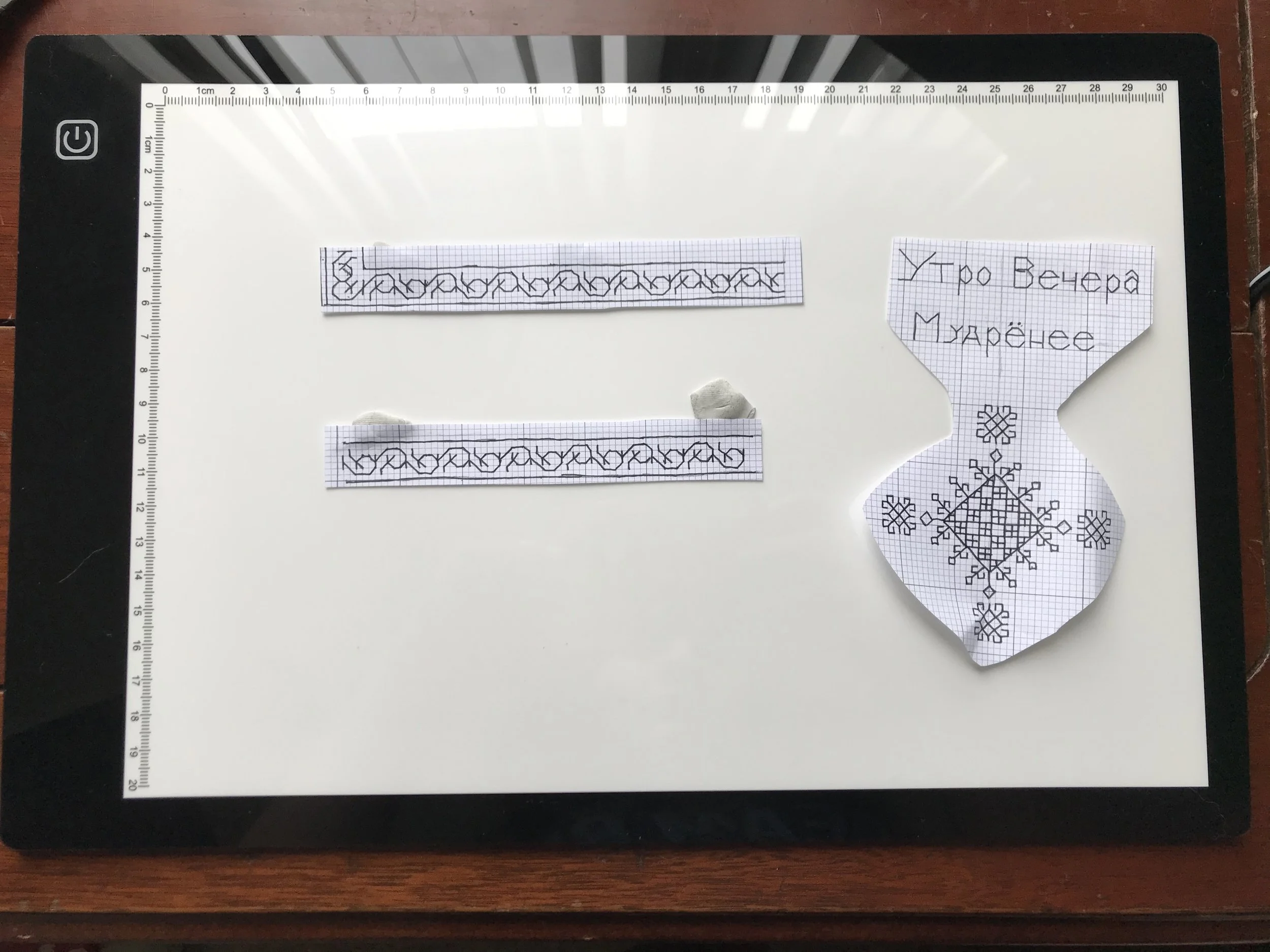Sof’ia’s Birthay Present
Project Specs:
Materials Used: White linen fabric, black linen and red cotton thread, glass beads
Size: 12" x12 " ish. Perfect squares are for people who don't have cats trying to help them cut things.
Source inspiration: "Savior Not Made By Hands" (Russia, 1398) and "Sun Chariot" (a common Russian embroidery motif).
The cup cover before the addition of beads.
This project was a lovely break from my usual projects. I love making garb, but I have to say, it starts feeling like an obligation, not a joy, after a while. Getting the chance to make something for someone else reminded me of the joy of doing art in a way that I definitely needed in the midst of COVID-19 quarantine.
Sof’ia is a perfect person for presents. She is an incredible friend, deserving of anything and everything I could give her as a friend, but she's also an incredibly interesting person. Her SCA interests are Russian and Tartar, which I have to say I know exactly nothing about. This turned into a fascinating opportunity to learn about styles of embroidery far outside of my usual purview, in addition to doing something nice for someone I care about. That may seem a little selfish, but Sof’ia is also incredibly encouraging of other people learning and has been such a source of fun learning opportunities for me as a person, so it seems to fit.
This piece is intended as a goblet cover, though it's just a square of embroidered cloth, so I imagine its uses are many. To that end, I wanted to make sure the borders were the heaviest part of it, so I concentrated the embroidery there, with her personal motto in the center.
To no surprise, much of the research I was able to find on Russian embroidery focused on ecclesiastical embroidery, and not on common, everyday embroidery styles. This was beautiful to read and go through. There is a lot of attention to detail placed on the faces in these icons, and they really are a stunning example of portraiture in embroidery. However, they don't say a lot about what the average person might have interacted with on a day to day basis. There are a lot of examples of Ukrainian linework embroidery, similar to my much-beloved blackwork, but finding Russian examples of this was tricky.
Ultimately, I drew on a Russian ecclesiastical piece for inspiration for the border design and a Russian thematic element for the centerpiece.
In this piece, called "Savior Not Made By Hands," Christ is surrounded by both religious and political figures of the time. It was commissioned in 1389 by a Princess who later joined holy orders, likely at the same church to which this was donated. I specifically drew on the border and outline elements from this piece. According to the source of the image, these are done in gold thread on violet satin. This piece is a really interesting selection of clothing as well as portraiture and shows a lot of the vibrancy of colors that I've appreciated in my brief study of Russian embroidery. (Rezansky, 2019)
For the center element, I wanted to try to capture something more every day than the opulence of ecclesiastical embroidery. The text in the middle, Sof’ia's personal motto, translated reads "Morning is Wiser than Evening." I have been assured that this pretty much means "sleep on it" or "things will look better in the morning" and got a good laugh out of that. However, it DID give me a theme. The Sun Chariot (above) depicts the Sun Maiden being pulled in her chariot by two animals (Swans? Horses? The world may never know). The elements I used from the Sun Chariot are the Maiden's head, as well as the details in her arms. Red is a recurring theme in both styles of embroidery, so I wanted to incorporate that as well.
This piece was done on white linen in a variety of colored threads. I followed my usual method of drawing the pattern out on 1/14" graph paper, then transferring it to the linen. Eventually, it will feature beads on the corner to weigh it down.
I still struggle with transferring patterns. My major issue with prick and pounce is often the limitations of my graph paper makes it complicated to get everything lined up, and it often gets messy. I'm trying a different method soon that's going to utilize a large slate frame for my fabric, measuring out my ideal neckline, and then using some large scale tracing paper to draw out the whole design at once, lined up properly. After that, I'll use a very fine needle, a DIY pouncing bag (not my handle set up), and a second copy of the design underneath the pouncing as a guide.
For this project, because it's not going in for competition, I finally broke down and used a light table for it with the help of museum putty. This made such a difference for lining things up and getting them to be where they needed to. While I'm still working on period methods for pieces that I plan to enter in displays or competitions (maybe if I use more, smaller dots closer together so that the lines are clearer? Or get an actual pouncing bag for lighter application?), for pieces that are just for fun, I'm happy to do it this way.
Sources:
Rezansky, Ivan Matfeevich, and John Beebe. “Ecclesiastical Embroidery.” Ivan Rezansky's SCA Adventures, 14 Sept. 2019, rezansky.com/category/ecclesiastical-embroidery/.
“Sun Shallop/Chariot.” Traditional Russian Costume, traditionalrussiancostume.com/embroidinfo/xru_en.php?nametxt=4.
Willem. “Russian Embroidery.” Russian Embroidery, Leiden Textile Research Center, 23 Oct. 2016, trc-leiden.nl/trc-needles/individual-textiles-and-textile-types/samplers/russian-embroidery.



